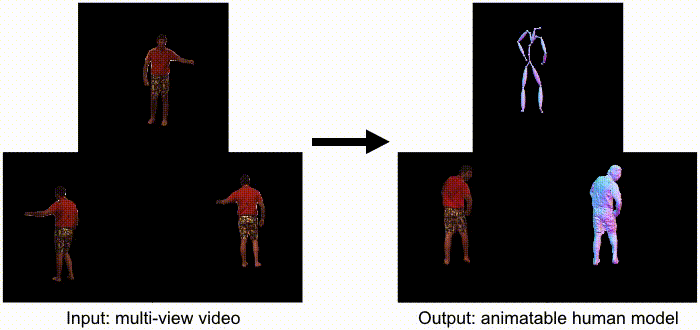Animatable Neural Radiance Fields for Modeling Dynamic Human Bodies
This paper addresses the challenge of reconstructing an animatable human model from a multi-view video. Some recent works have proposed to decompose a non-rigidly deforming scene into a canonical neural radiance field and a set of deformation fields that map observation-space points to the canonical space, thereby enabling them to learn the dynamic scene from images. However, they represent the deformation field as translational vector field or SE(3) field, which makes the optimization highly under-constrained. Moreover, these representations cannot be explicitly controlled by input motions. Instead, we introduce neural blend weight fields to produce the deformation fields. Based on the skeleton-driven deformation, blend weight fields are used with 3D human skeletons to generate observation-to-canonical and canonical-to-observation correspondences. Since 3D human skeletons are more observable, they can regularize the learning of deformation fields. Moreover, the learned blend weight fields can be combined with input skeletal motions to generate new deformation fields to animate the human model. Experiments show that our approach significantly outperforms recent human synthesis methods. The code and supplementary materials are available at https://zju3dv.github.io/animatable_nerf/.
PDF Abstract ICCV 2021 PDF ICCV 2021 Abstract
